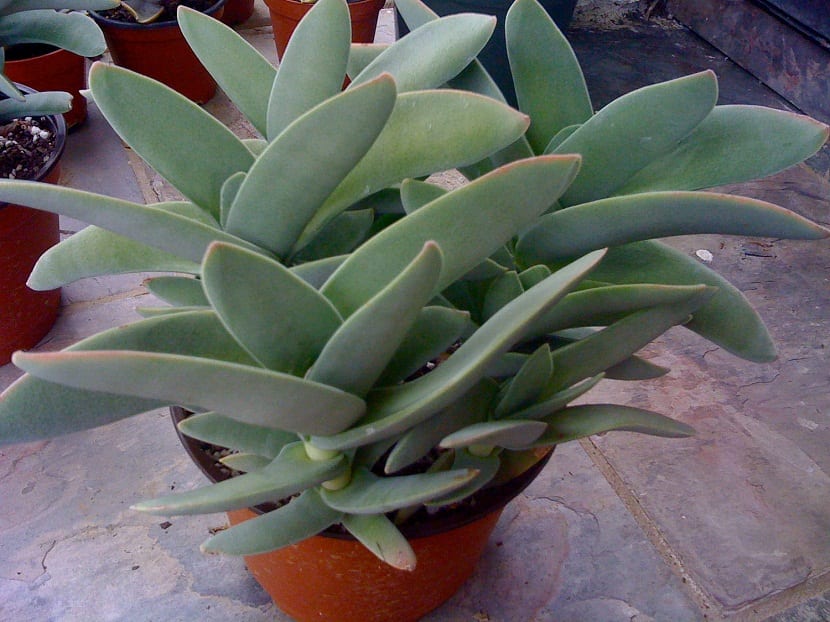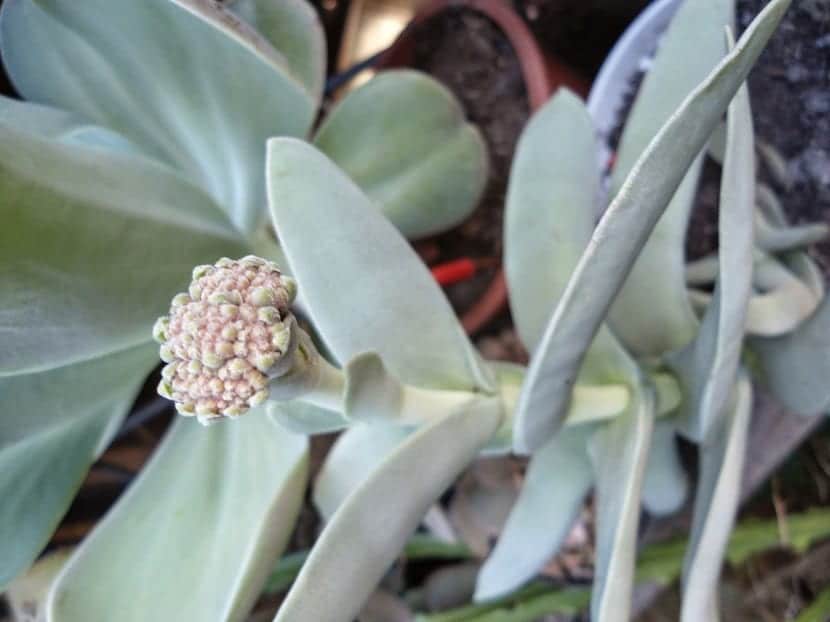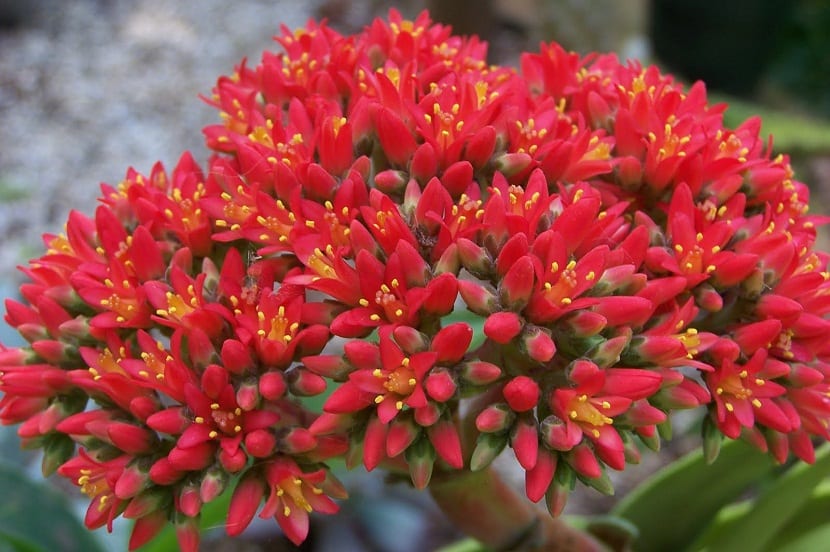
The Crassula falcata is the scientific name of the Crassula of sickles, a plant that belongs to the crassulaceae family or called crassulaceae. The origin of this plant is found in the countries of South America.
Characteristics of the Crassula falcata

This is a succulent plant that can grow to a height of about 50 cm. The leaves that are quite fleshy are green with shades of gray and usually they are usually shaped like a sickle (that's where its name comes from), which can measure up to 20 cm.
As long as I have this plant buds usually appear that branch and it is for this reason that the plant can measure up to 50 cm in diameter.
Its flowering season has its beginning from the last days of spring until it reaches the summer months, with inflorescences that attract a lot of attention and that in turn are made up of small ones, as well as abundant flowers that are initially orange in color and after a few days they take on a red color that is quite intense.
The genus of Crassula, which belongs to the crassulaceae family, as we have already mentioned before, is constituted by a quantity that exceeds 600 species of plants that are succulents and that have their origin in their majority, in the countries of southern Africa.
Some of the species of this genus that are best known are the following:
Crassula arborescens, Crassula capitella, Crassula falcata, Crassula lactea, Crassula conjuncta, Crassula corymbulosa, Crassula lycopodioides, Crassula marnieriana, Crassula “Morgan's beauty”, Crassula multicava, Crassula perforata, Crassula tetragona, Crassula oblivaqua, Crassula oblivaqua.
Necessary care for the Crassula falcata
This is a plant that requires direct sunlight, but we must avoid the midday sun if the summer has too warm temperatures, as for example it is the Mediterranean climate of Barcelona.
This plant has the ability to withstand high temperatures that reach up to 30 ° C in the sun and can withstand about 45 ° C if the plant is in a shady place. In winter temperatures should not reach 5 ° C in an environment that is dry.
If the climate offers us the opportunity, it is possible that we can plant them in gardens that are penetrating to the outside, to to be able to form some rockeries, but the most common is that they are used as plants for the interior or also as terrace and balcony plants.

An excellent soil for this plant can be a mix of 40% siliceous sand with 60% substrate that is universal. It is also possible to add some perlite.
Watering we have to do it regularly in the summer months or we can also let it dry completely and then we water it in a deep way by completely wetting the pot. We must reduce the risks when winter comes.
This is a plant that can be multiplied through seeds or it can also be by the separation of the leaves or by the basal shoots, which we can use as cuttings so that new plants can grow. It is advisable to sow these cuttings in the spring or it can also be in the summer.
This plant can suffer attacks by fungi if we do not water the plant excessively. In order to avoid this, It is important that we let the land dry between each of the irrigations, just as we must avoid excess humidity caused by the environment. We can also apply a little copper sulfate as a prevention in the spring.